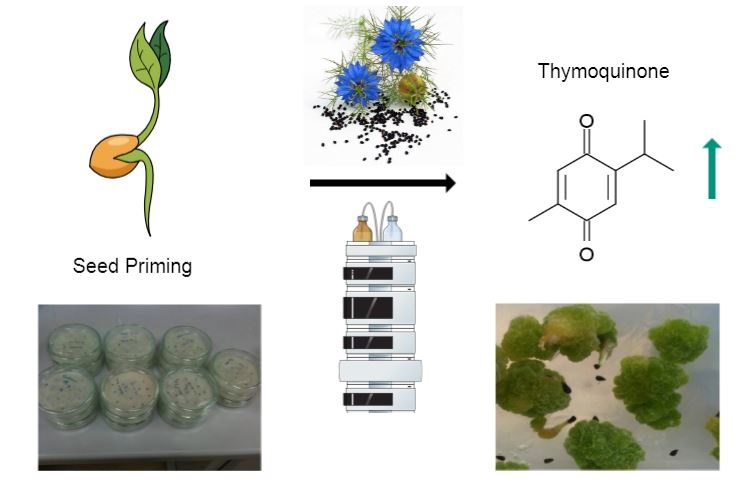JOURNAL 950
Journal of Chemical Metrology
Year: 2018 Issue: 2 July-December
p.89 - 98
Viewed 3982 times.
GRAPHICAL ABSTRACT

ABSTRACT
The aim of this study is to analyze the changes on thymoquinone content, which is the major constituent of black cumin (Nigella sativa L.) seeds, by using priming methods. For the priming studies, seeds placed in distilled water (18 - 20 hours), PEG (Polyethylene glycol 10%, 20%) and mannitol (4% and 6%) for 20 hours and subsequently dried for 24 hours on blotting paper at room temperature (24 ºC ± 1 ºC). The best priming results were obtained in the 4% of mannitol treatment. Control (not primed) Nigella seeds and 4% of mannitol primed seeds were planted in both greenhouse and farm conditions. Seed extracts were analyzed with HPLC to compare the amount of thymoquinone. The results reveal that seed priming with 4% of mannitol increases the amount of thymoquinone in Nigella sativa. In addition, the effects of plant growth hormones on callus regeneration of these primed seeds were investigated herein.
KEYWORDS- Black cumin
- HPLC
- Nigella sativa
- priming
- thymoquinone
- tissue culture